Now is the time to catch binocular Comet C/2014 S2 PanSTARRS, as it tops +8 magnitude ahead of predictions this month and crosses circumpolar northern skies. Will this Christmas comet stay bright post-perihelion, rivaling other comets into early 2016?
How ’bout Comet C/2013 US10 Catalina, huh? The comet took center stage early this month, as it broke +7 magnitude in brightness, experienced a tail disconnection event, and grouped with Venus and the waning crescent Moon in the dawn sky.
Expect comet US10 Catalina to remain a fine binocular object kicking off 2016, reminiscent of the binocular comet C/2014 Q2 Lovejoy from just this past winter. But there’s another comet for northern hemisphere residents currently performing above expectations. Comet C/2014 S2 PanSTARRS is the comet you most likely aren’t watching, but should be. The comet has recently brightened ahead of expectations to +8th magnitude, and may top out in the coming weeks at +7th magnitude post-perihelion.
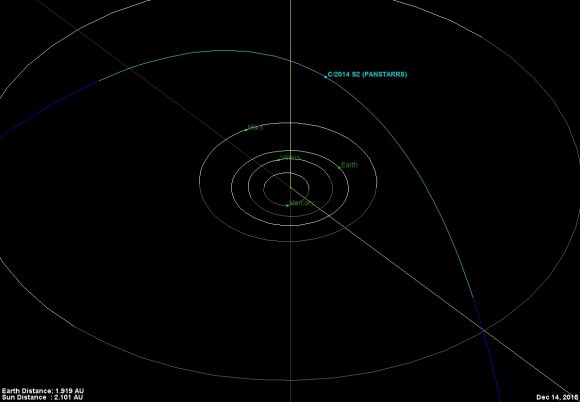
Comet S2 PanSTARRS reached perihelion 2.1 astronomical units (AU) from the Sun just last week on December 9th, 2015. Discovered on September 22nd, 2014 by the prolific PanSTARRS 1 survey based atop mount Haleakala on Maui in Hawaii, S2 PanSTARRS is on an estimated 2,217 year orbit, inclined at a steep angle of 65 degrees relative to the ecliptic and the general plane of the solar system. This makes for its current residency in the realm of the northern celestial pole, and the comet remains circumpolar above latitude 30 degrees north for the duration of this apparition, crossing for the constellation Draco in late 2015 into the constellation Ursa Minor in early 2016.
We get a handful of binocular comets each year, faint fuzzies looking like unresolved globular clusters. Such a passage would’ve went unrecorded in pre-telescopic times, and hunting for comets the likes of S2 PanSTARRS partly inspired Charles Messier to make his first and famous deep sky catalog, marking the celestial skies for comet hunters as if to say ‘here be cometary impostors…’
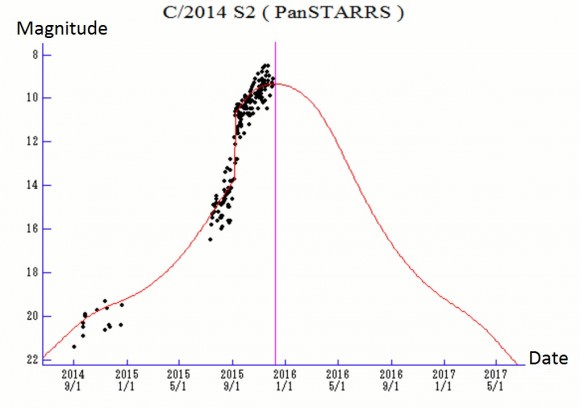
But Comet S2 PanSTARRS won’t stay bright for long.
Here’s the run down over the next few months of key astronomical dates with destiny for this fleeting comet. The Full and New Moon phases are also denoted, marking weeks favoring dark vs light-polluted skies.
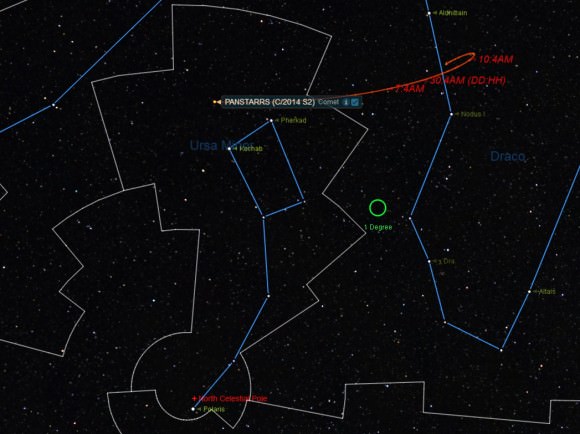
-December 25th: The Moon reaches Full.
-December 31st: Stationary in its apparent motion, before appearing to reverse direction to the northeast.
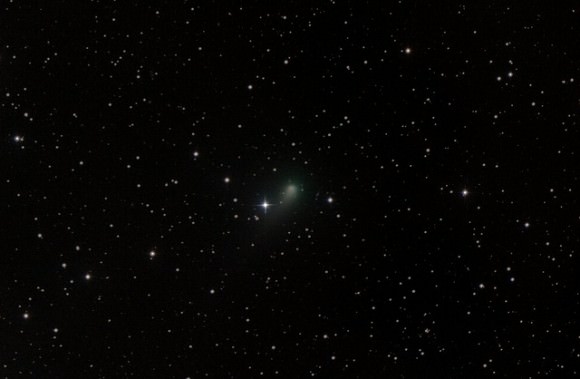
-January 1st: Tops out in brightness at +7th mag?
-January 10th: New Moon.
-January 22nd: 20 degrees from Comet C/2013 US10 Catalina crossing through the constellation Draco.
-January 24th: Passes less than one degree from the +4.8 magnitude star 18 Draconis.
-January 24th: Full Moon.
-February 8th: New Moon.
-February 20th: Passes into the constellation Ursa Minor.
-February 22nd: Full Moon.
-February 27th: Closest Earth approach, at 1.83 AU distant. Moving at a maximum apparent speed of 30′ (half a degree, about the angular size of a Full Moon) per day.
-February 27th: Passes just over one degree from the +3 magnitude star Pherkad (Gamma Ursae Minoris).
-February 29th: Reaches its most northerly point, at a declination 71 degrees north, just 19 degrees from the northern celestial pole.
-March 1: Drops back below +10 magnitude?
-March 9th: New Moon.
-March 18th: Crosses back into the constellation Draco.
The best time to catch Comet S2 PanSTARRS over the next few months is in the early morning hours. From latitude 30 north, the comet sits 23 degrees above the NNE horizon around 5AM local on Christmas Day; the farther north you go, the higher the comet will be above the horizon.
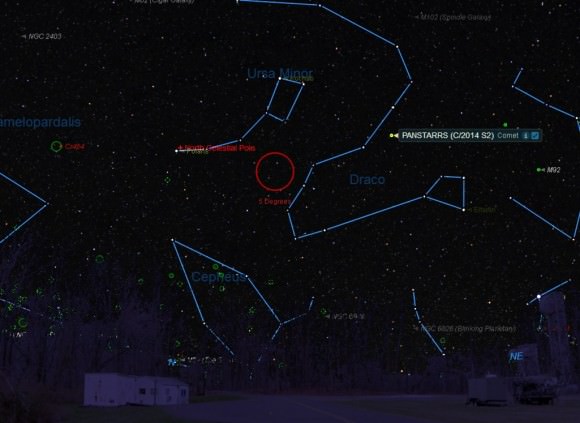
In binoculars or a small telescope, expect comet S2 PanSTARRS to appear as a fuzzy indistinct ‘star,’ which stubbornly refuses to snap into focus, like an unresolved globular. I would show off S2 PanSTARRS at a public star party under dark skies. When it comes to comets, brighter +10th magnitude triggers our ‘is interesting, worthy of note for skilled observers’ alarm.
A caveat is in order; expect any given comet to appear visually fainter than a star of the same quoted brightness. As with deep sky objects, said brightness is smeared out over the expanse of the comet, giving it an overall lower surface brightness appearance for the viewer.
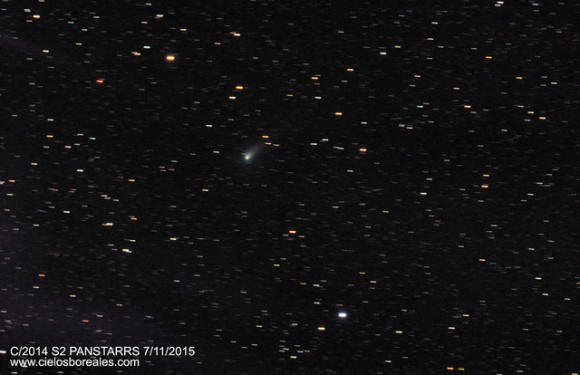
And now for the wow factor: the last time comet S2 PanSTARRS passed Earth in the 3rd century BC, Carthage was battling an upstart Rome during the first Punic Wars. The comet very likely passed through the inner solar system unnoticed and unrecorded, as it was never a naked eye object. The comet’s next pass through the inner solar system is out around 4232 AD, give or take a year…
Along with US10 Catalina and comet 2013 X1 PanSTARRS, expect S2 PanSTARRS to join the ranks of binocular 2016 comets… more to come on that soon.
Remember, the next ‘Great Comet’ could swing through the inner solar system at any time… and we’re definitely due!

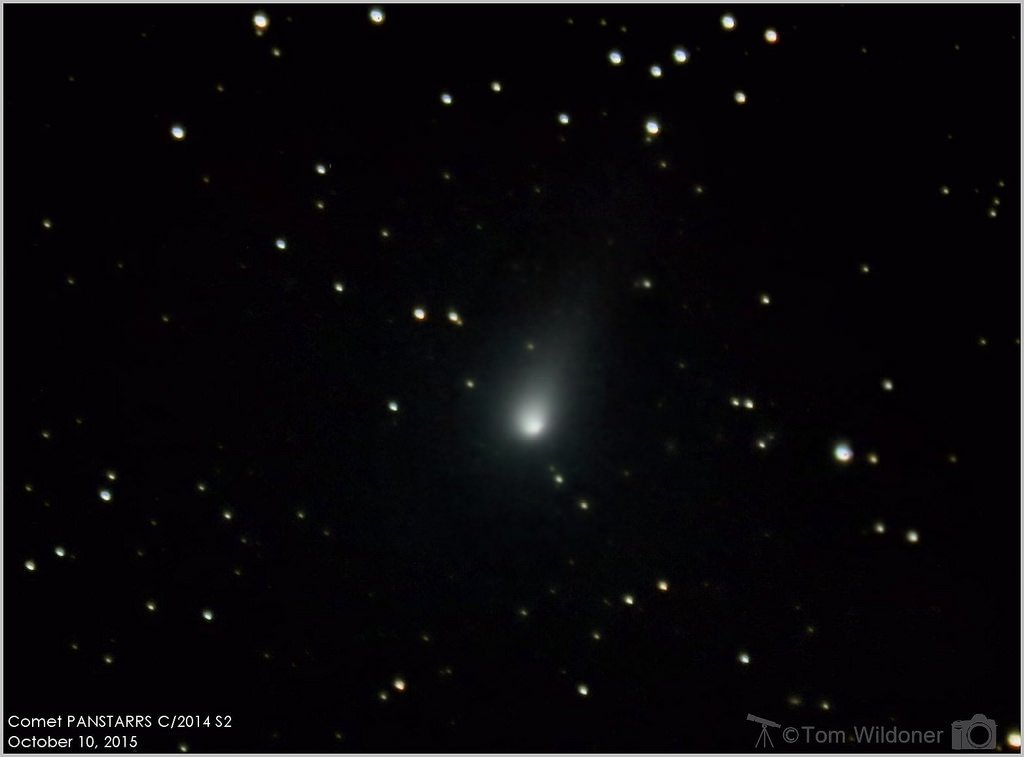
Hmm… the comments seem to be glitchy? Do they work today? UT’s new webpage a work in progress?
So there I was again early this a.m. (4:30) looking at Comet Catalina. Monday morning’s viewing at 5:30 was pretty good but this morning’s earlier view was ever so much better in a darker sky. Today I saw some of the dust tail and even some hints of the ion tail. A few minutes later and they were gone/disappeared. You KNOW how fickle a comet’s tail can be? i.e. Not all of them can be like C Hyakutaki!
Anyway.. Comet Lovejoy and Comet Catalina make a swell pair of ‘bookends’ for the year! SWEET!
Yes.. 4-5 a.m. is usually my seepy time. C. Catalina was so sweet.. I totally forgot to look at X1 PANNSTARS! Duh..
Here’s hoping tomorrow morning’s sky is clear so I can see that sucker! Comet Catalina was my 51st visually acquired comet. TOOT’s his horn! HONK! Maybe 52 tomorrow?
I think they’re working now. This was an infuriating bug to track down. Apparently there was a conflict with WordPress and one of the plugins on the site with the new theme. It redirected comments to some strange page on the site. Anyway, working now.
Please let me know if you find any more bugs, issues, gremlins or gotchas.
Oh so good to see the comments back I was thinking they were gone forever 🙁